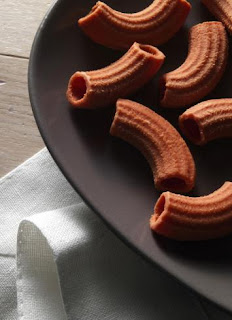Chocolate Salami

Chocolate salami is a perfect recipe to make your kids. It is funny, quick and delicious. The idea of eating a chocolate salami is a little gross, but it taste like just like any good chocolate dessert. You can serve the Salami with whipped cream and strawberries, it will taste delicious.
Ingredients
- 7 oz / 200g dark chocolate, chopped
- 3 oz / 85g unsalted butter
- 1/3 cup / 70g white sugar
- 1 large egg plus 1 large egg yolk
- 6 oz / 170g plain cookies (tea biscuits, digestive cookies), crushed not to small
- 2 tablespoons powdered sugar
- 1/2 teaspoon vanilla extract
- 2 tablespoons / 30ml dark rum or amaretto liquor
- 1 cup mixed nuts, toasted and roughly chopped
Instructions
- Mix chocolate and butter in a pot and melt it over another pot of boiling water.
- In a bowl, combine vanilla extract, sugar, egg and yolk. Add to the chocolate mixture and mix well. Stirring frequently, continue to cook until sugar has dissolved and the mixture is smooth (about 4-5 minutes). It should be hot to touch. Remove from heat.
- Add crushed cookies, rum and chopped nuts to the chocolate mixture and stir with spatula until well combined. Leave to cool and thicken slightly.
- Divide the mixture evenly between two sheets of parchment paper. Roll it up to form two logs. Twist the ends tightly and leave in a fridge overnight.
- Unwrap the logs and coat with powdered sugar. You can tie them like a real salami with string or just leave it normal. Cut into slices and serve.
- Chocolate Salami can be stored well wrapped in a fridge for up to 1 week or for up to 1 month in a freezer.



























